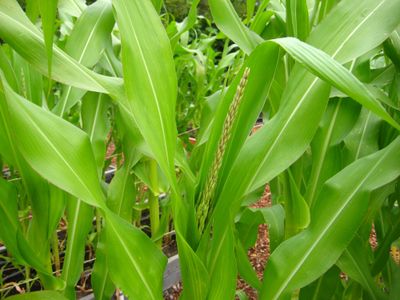Troubleshooting common garden problems
Make sure plants getting right amount of water, nutrients

How is your garden growing so far? Are you having any issues? When it comes to vegetable gardening, warm-season crops such as corn, tomatoes and squash can be susceptible to problems this time of year. Let’s look at a few of the most common ones.
Corn
When a corn plant has a purple cast to its leaves, it means the plant has a phosphorus deficiency. This usually happens in the spring and lasts until the plant’s root system grows large enough to reach the nutrients it needs. Be sure to add plenty of organic material such as compost when preparing the soil and monitor the plants during the summer.
Corn earworms are insects that none of us wants to find in our corncobs. The adult moths lay eggs in the corn silks. When the eggs hatch, the larvae make their way from the silks into the ear and start munching. The easiest solution is to place a few drops of mineral oil at the tips of the ears about a week after the corn silks appear. The oil will smother the larvae before they get to the ear.
Another corn problem is called corn smut. If you see a gray, swollen area along the stem of a corn plant, you need to take immediate action. This fungus is very easily spread by spores, so carefully remove the plant and dispose of it in the trash, not in the compost pile.
Tomatoes
Blossom end rot can affect both tomatoes and peppers. It is a brown, leathery spot on the blossom end of the fruit caused by a lack of calcium in the soil. During hot weather, the plants become stressed and use soil moisture and nutrients only for the roots and leaves, rather than for the developing fruit. To avoid this problem, water your plants regularly and mulch heavily around them with organic materials.
Another problem is blossoms dropping off before they have a chance to develop into tomatoes. This is caused by cool nighttime temperatures, which will resolve as the season progresses.
Curly Top is a virus found in dry regions that affects beets, beans and other vegetables, but is most commonly seen on tomato plants. The leaves curl upward and turn yellow, and the veins turn purple. This virus is transmitted by the beet leafhopper. To prevent this problem, select tomato varieties that are resistant to this disease and avoid growing tomatoes near beets or spinach.
Tomato hornworms are very common. These larvae of the hawk or sphinx moth have voracious appetites. Their green bodies blend in well with the leaves so it can be tricky finding them. Look for areas where leaves are stripped from the stems or for their brown droppings on the soil surface below. To control them, hand-pick the worms from the foliage; for large infestations, spray the foliage with Bt – Bacillus thuringiensis – bacteria harmful to the larvae but safe for humans.
Squash
Squash plants are generally trouble-free. Early in the season, gardeners can be puzzled when developing fruits shrivel up and fall off. This is caused by a lack of pollination and will resolve as the season progresses and more pollinators are out and about.